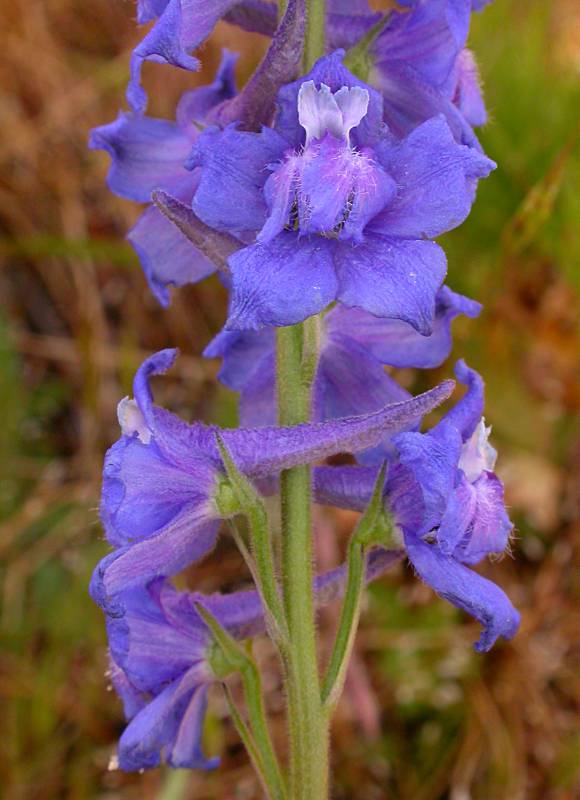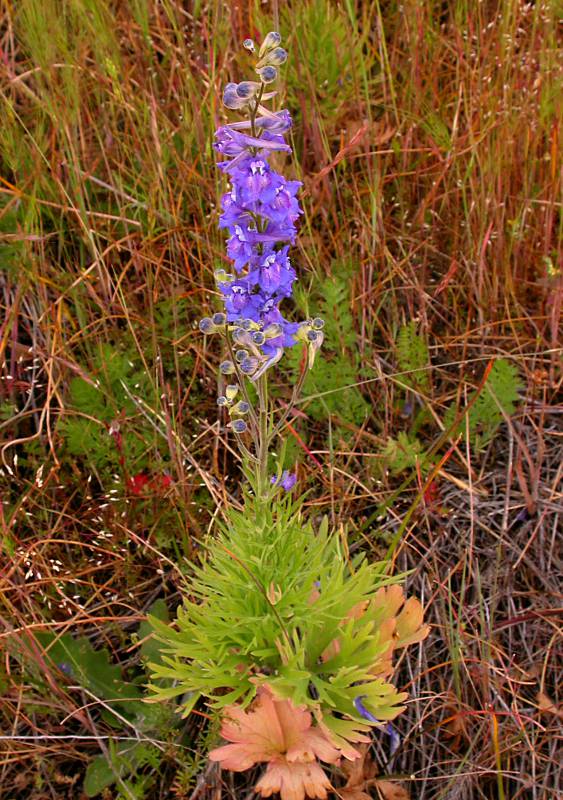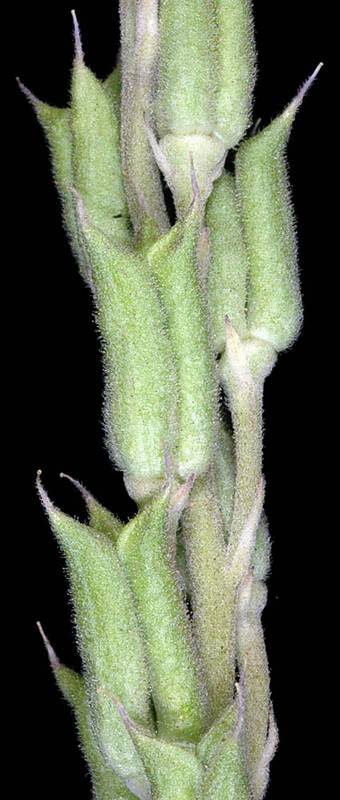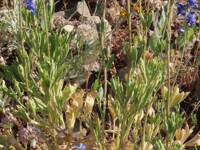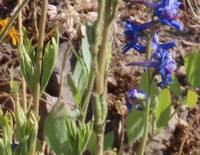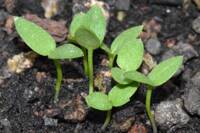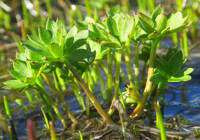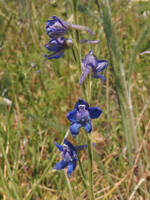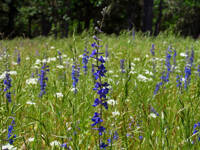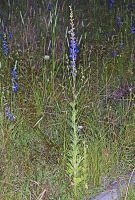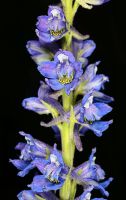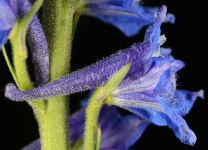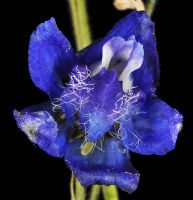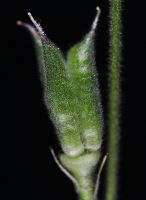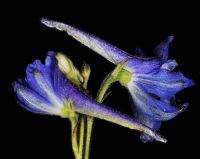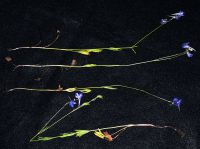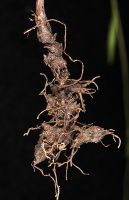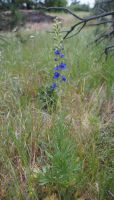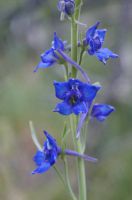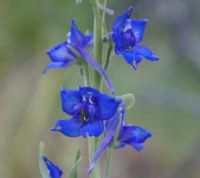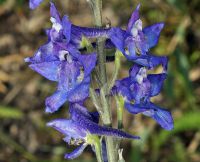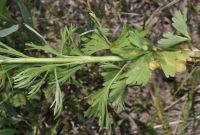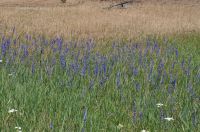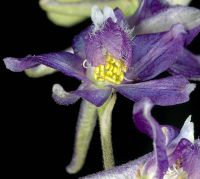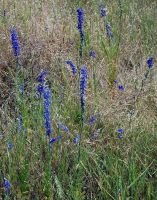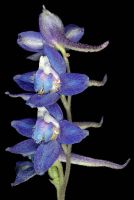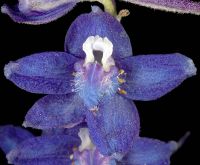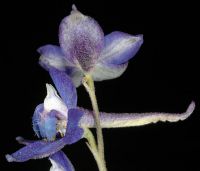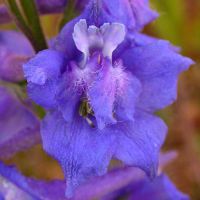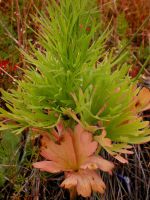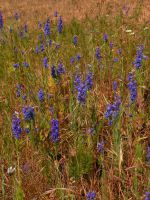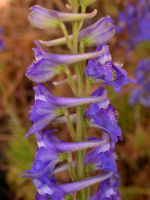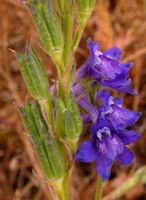Distribution: Occurring east of the Cascades crest in Washington; British Columbia to Oregon, east to Montana and Wyoming.
Habitat: Vernally wet swales and meadows, in sagebrush or ponderosa pine forest.
Flowers: May-July
Origin: Native
Growth Duration: Perennial
Conservation Status: Not of concern
Pollination: Bumblebees, bees, flies, butterflies, hummingbirds
Sturdy, grey-puberulent perennial from fleshy roots, the stems 4-7 dm. tall.
Basal and lower cauline leaves long-petiolate, the blades 4-6 cm. broad and divided nearly to the base into 3 segments, which are twice divided into broad segments; lower leaves abruptly transitional into mid-stem leaves, which are short-petiolate, very numerous and overlapping, and finely divided into linear segments.
Inflorescence a many-flowered, spike-like raceme, the pedicels shorter than the calyx spur and strongly ascending; sepals 5, bluish-purple with lighter streaks, cupped forward, 7-9 mm long, oblong, the spur 11-17 mm. long; petals 4, small, the lower pair blue, lobed, the upper pair white; stamens numerous; pistils 3.
Follicles 8-12 mm. long, erect, usually glandular.
Publication: J. Bot. 6: 68. 1847.
PNW Herbaria: Specimen records of Delphinium distichum in the Consortium of Pacific Northwest Herbaria database
WA Flora Checklist: Delphinium distichum checklist entry
OregonFlora: Delphinium distichum information
E-Flora BC: Delphinium distichum atlas page
CalPhotos: Delphinium distichum photos

